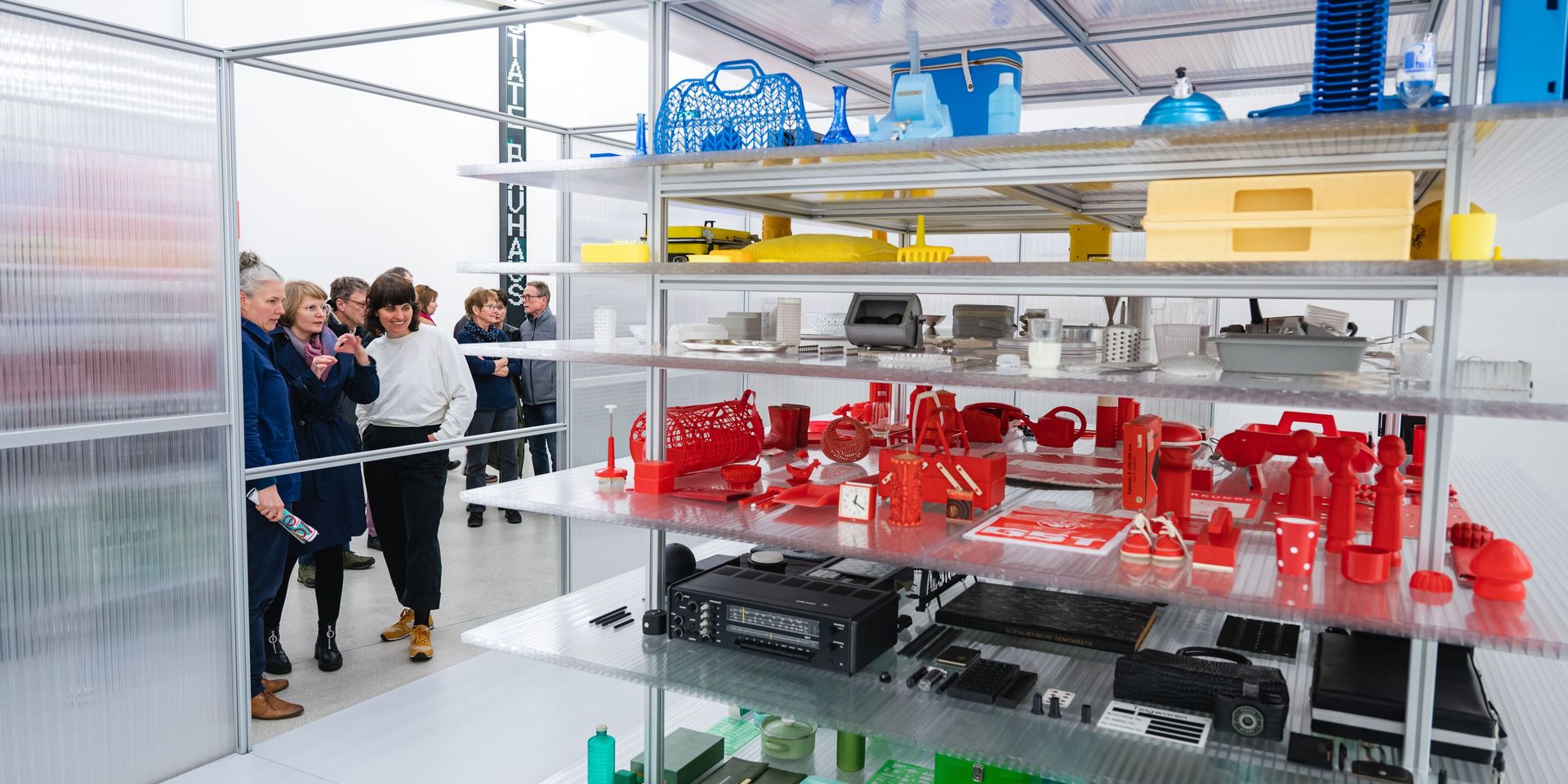Projects of the Klassik Stiftung Weimar are funded by the European Regional Development Fund (ERDF) and the Free State of Thuringia, represented by the State Chancellery of Thuringia, Department of Culture and the Arts.


How do we want to live in the future? The exhibition at the Bauhaus Museum Weimar examines aspects of this question from the diametrical constructs of desire and crisis. Sustainability and social justice are the central themes of the exhibition.
How do we want to live? This was one of the most pressing questions in 1923/24 according to the State Bauhaus, founded in Weimar in 1919. In view of today‘s crises – be it the coronavirus pandemic, unaffordable housing or exploding energy costs - the question is as relevant today as it was 100 years ago.
The exhibition “Ways to Utopia. Living Between Desire and Crisis” addresses current challenges of modern living and confronts them with selected items from the permanent cultural-historic exhibition at the Bauhaus Museum. How can we combine living and the good life in the future? Are we looking for a new utopia, a more socially equitable and sustainably designed environment? Or do we continue along the same path as before?
Various theme-based “islands” consisting of installations, photos, films and household items highlight the economic, ecological, social and cultural backgrounds of living and the good life. The exhibition begins with the Haus Am Horn, the oldest preserved Bauhaus building constructed 100 years ago for the Bauhaus Exhibition of 1923. Designed by Bauhaus teacher Georg Muche, the house was considered a model for contemporary views on life and living.
The participating artists, designers and architects include Jana Sophia Nolle, Lara Weller, Simon Menner, Martin Maleschka, Van Bo Le-Mentzel, Alan Marshall and other students of the Bauhaus-Universität Weimar. Original Bauhaus pieces by Marcel Breuer, Alma Siedhofi-Buscher, Walter Determann in combination with joint works by students of the Bauhaus encourage visitors to consider how life and living environments are designed. Part of the exhibition, created with researchers at the Institute of European Urban Studies at the Bauhaus-Universität Weimar and Weimar Living Research will present additional facts on the politically fraught topic of living.
The aim of the exhibition is not to ofier q uick solutions to today‘s problems, but rather to encourage visitors to consider various options for the present and coming years. When faced with upheaval, the members of the Bauhaus saw the necessity (and inherent opportunity) to develop unconventional solutions or even visions for a future society. Today we need more space for utopias — both large and small — to shape a sustainable future worth living. We invite you to get inspired and rethink how we live!